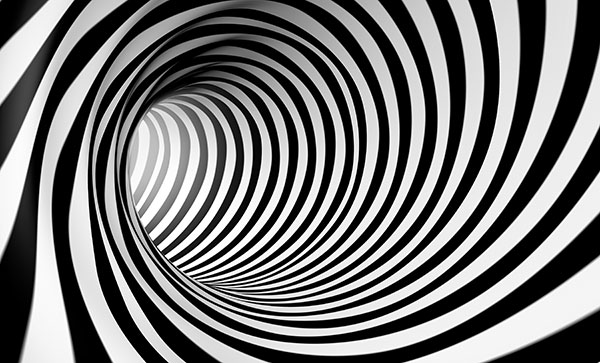The Truth About Vertigo

The Truth About Hip Pain
January 11, 2016
My Foot is Killing Me!
January 22, 2016If you’ve ever experienced head spinning that was not self-induced from a roller coaster ride, or a night of indulging in too much moonshine, I bet you were scared. Our bodies rely on that system to warn us that something bad might be happening. Dizziness can be a sign of the brain not receiving enough blood flow which can occur with a heart problem or a stroke. If your dizziness is accompanied by other symptoms like chest pain, severe headache, slurred speech, weakness or numbness, this is considered a medical emergency and you should seek help immediately. If on the other hand, you have brief episodes of intense spinning with certain movements of your head, i.e. when you roll to one side or when you reach up to a cabinet, you may have positional vertigo (BPPV – benign paroxysmal positional vertigo).
Our balance system relies on an intricate network of canals near our ears that monitor the movement of our head. The canals contain fluid, hair and tiny crystals thought to be made of calcium. The canals react to gravity and our body position while working closely with other body systems to keep you walking straight and upright. Think of the canals as a carpenter’s level and you have 3 on each side of your head telling the brain your exact location, i.e. are you standing, sitting or dancing. Sometimes, and there isn’t good research on why, the crystals move out of place. A blow to the head can do it, but usually it occurs without cause. Your brain receives a false signal when you move your head a certain way due to the misplaced crystals so you feel dizzy. It’s a horrible sensation which makes some individuals nauseous and anxious and often times they spend their life avoiding moving their head into positions that provoke the dizziness. I once had a client who spent years sleeping in a recliner, avoided having her teeth cleaned, and having her hair shampooed by her stylist from fear of vertigo.
A physical therapist trained in vertigo treatment can resolve these symptoms quickly. Honestly, this is one of the most gratifying treatments I offer. Most clients are better after the first visit. We determine which canal is malfunctioning and treat with a series of head turns and rolling using gravity to restore the position of the crystals. Odd, I know, but the treatment works almost 100% of the time. So, the next time you or a friend feel the spin, get checked out by a PT and say “I think I have positional vertigo and my crystals may be out of place”.
– Dina Kramer
Kramer Physical Therapy
Knoxville, Tennessee




